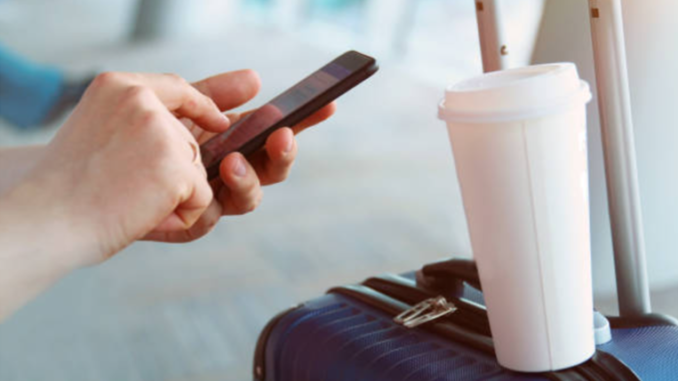
By Larry and Adam Mogelonsky - 12.6.2022
Budgets for 2023 likely include a fair consideration of additional automations that can be embedded into the hotel tech stack to heighten team productivity and offer some potential cost savings. One problem herein that we see is the time crunch on any company’s human stack whereby every new system has to be vetted, setup, onboarded, maintained and (hopefully) used on a regular daily. In devising any semblance of a strategic prioritization, we’ve found that focusing on the guest-facing communications throughout the customer journey have far-reaching benefits.
Writing about said advantages for every touchpoint would be quite long for a quotidian read, so we draw your attention to perhaps the most critical aspect of the guest journey for the next 12 months – the time prior to booking and the time leading up to arrival onsite. The end goal here is to ramp up automated communications so that you can, without adding labor time to the task, respectively increase booking conversions and drive more ancillary spend.
But this is a bit too much offense without first considering the defense. For this, what we’re finding is that, very broadly speaking, guests in the latter half of 2022 are immensely busy, are attention-deprived and yet are expecting 2019 levels of service regardless of any back-of-house challenges your property or brand is facing. Taken together, this means that, without proper expectation management through diligent and adaptive communications, guests may have their onsite experiences compromised due to any number of perceived slights that whittle away from the service promise.
For instance, a guest arrives only to discover that the WiFi is temporarily down and they never received a proper notification of this in advance on their preferred channel. Or maybe a guest wants to use the fitness center but is frustrated by the surcharge that they didn’t know about prior to arriving because it wasn’t explicitly stated in the confirmation or prearrival email. Thirdly, consider guests whose stays have overlap with an on-premises event and are saddened to only find out after checking in and have already locked in their plans.
Lots of possible scenarios, but there’s one commonality: great pre-stay communications helps prevent any disappointments by setting the right expectation. Nowadays, given the sheer volume of digital noise we all encounter, expectation management also means channel management insofar as determining the best means through which to actually reach guests prior to arrival.

To this end, we spoke with Michael Kessler, CEO of ReviewPro, a Shiji Group brand, to dive into the specifics for how hotels can use an automated, labor-light communications platform to ensure that guest expectations are protected, and then also offering some conversion and upselling opportunities in the process. Our interview and demo of ReviewPro’s Messaging Automation resulted in the following five features that any IT professional and hotel brand manager should consider when evaluating how they manage communications across the entirety of the guest journey
- Profiling guests by channel. With data inputs from core systems like the PMS, outbound messaging can now be designed to target narrow workflows so that personalization is enhanced even before the customer is onsite. At its most foundational level, the pre-stay welcome communications should be split for first-timers and returning guests. Ditto for leisure guests and clients of corporate accounts. Now think about how you can engineer the pre-stay communications for direct bookings versus OTA guests: for the latter a goal could be to focus the messaging on phone-based channels and loyalty conversions, for example.
- Delivery metrics to inform future channel distribution. Such reporting works much like the digital advertising funnel we are all familiar with. You have the messy raw data uploaded to your outbound communications platform. From there, the outbound messaging platform can tell you which emails or phone numbers are actually valid. Then, of those validated guest accounts, you get a percentage actually delivered. And for all this winnowing out, you can map it over weeklong or monthlong stretches to report on KPI improvements for delivery and guest interactions in order to guide the evolution of your pre-stay messaging.
- Omnichannel messaging cascades. By “cascade,” we simply mean one then the other if the first one fails to deliver or isn’t opened. This is important because people are different in terms of how they interact with email versus text versus messaging services like WhatsApp or FB Messenger. With enhanced delivery logistics, you can set a cascade of preferred outbound channels that’s different for each outbound messaging campaign. For instance, your first choice for the three-days-out message may be email, but if this channel fails to deliver (like for an OTA email alias), the message will then automatically attempt to send a text to the guest’s phone. And if that secondary option also fails, the system tries via WhatsApp.
- Dynamic inserts. So, you have a delivery cascade and have set up different outbound campaigns according to some broad characters of your guests. The next enhancement would be for your messages to dynamically appear in the customer’s language of choice based off of their email or phone account settings. As well, the messaging should not just be blanket text but address the customer by their name and arrival date. With the flip of a switch, templated links for surveys, upselling (via a partnership with Oaky) and express check-in or check-out (via MyCheck) can all be inserted.
- One-off text alerts. The beauty of modern messaging platforms that can connect a desktop application right to the guest’s phone is that you can easily set up one-time SMS campaigns intended for information that’s important in the moment. For example, say the elevator breaks down. Rather than have an already busy front desk agent warn every guest passing through the lobby, a quick ping can be sent out to reassure everyone in house that it will be fixed within a few hours.
There are obviously more factors and features that may be top of mind for your brand, but we stop at five because, like your guests, you too are probably busy beyond all recognition. Innovations are happening continuously in nearly every aspect of hotel technology, so it’s a matter of balancing your immediate needs with what your team can handle implementing, as well as selecting partners that you can deepen your feature utilization as time marches on.

Together, Adam and Larry Mogelonsky represent one of the world’s most published writing teams in hospitality, with over a decade’s worth of material online. As the partners of Hotel Mogel Consulting Limited, a Toronto-based consulting practice, Larry focuses on asset management, sales and operations while Adam specializes in hotel technology and marketing. Their experience encompasses properties around the world, both branded and independent, and ranging from luxury and boutique to select-service. Their work includes seven books: “In Vino Veritas: A Guide for Hoteliers and Restaurateurs to Sell More Wine” (2022), “More Hotel Mogel” (2020), “The Hotel Mogel” (2018), “The Llama is Inn” (2017), “Hotel Llama” (2015), “Llamas Rule” (2013) and “Are You an Ostrich or a Llama?” (2012). You can reach Larry at [email protected] or Adam at [email protected] to discuss hotel business challenges or to book speaking engagements.
Are you an industry thought leader with a point of view on hotel technology that you would like to share with our readers? If so, we invite you to review our editorial guidelines and submit your article for publishing consideration.


